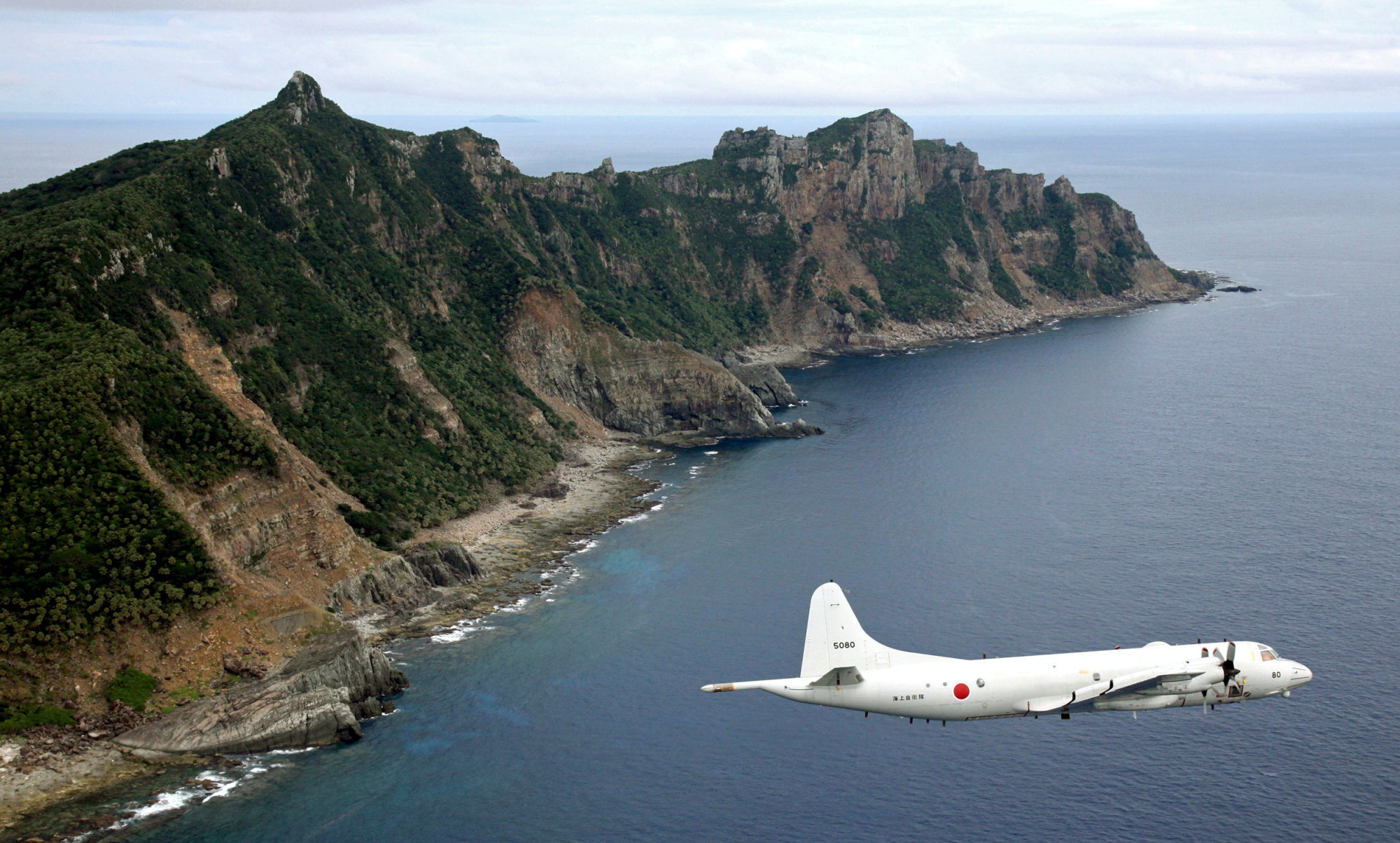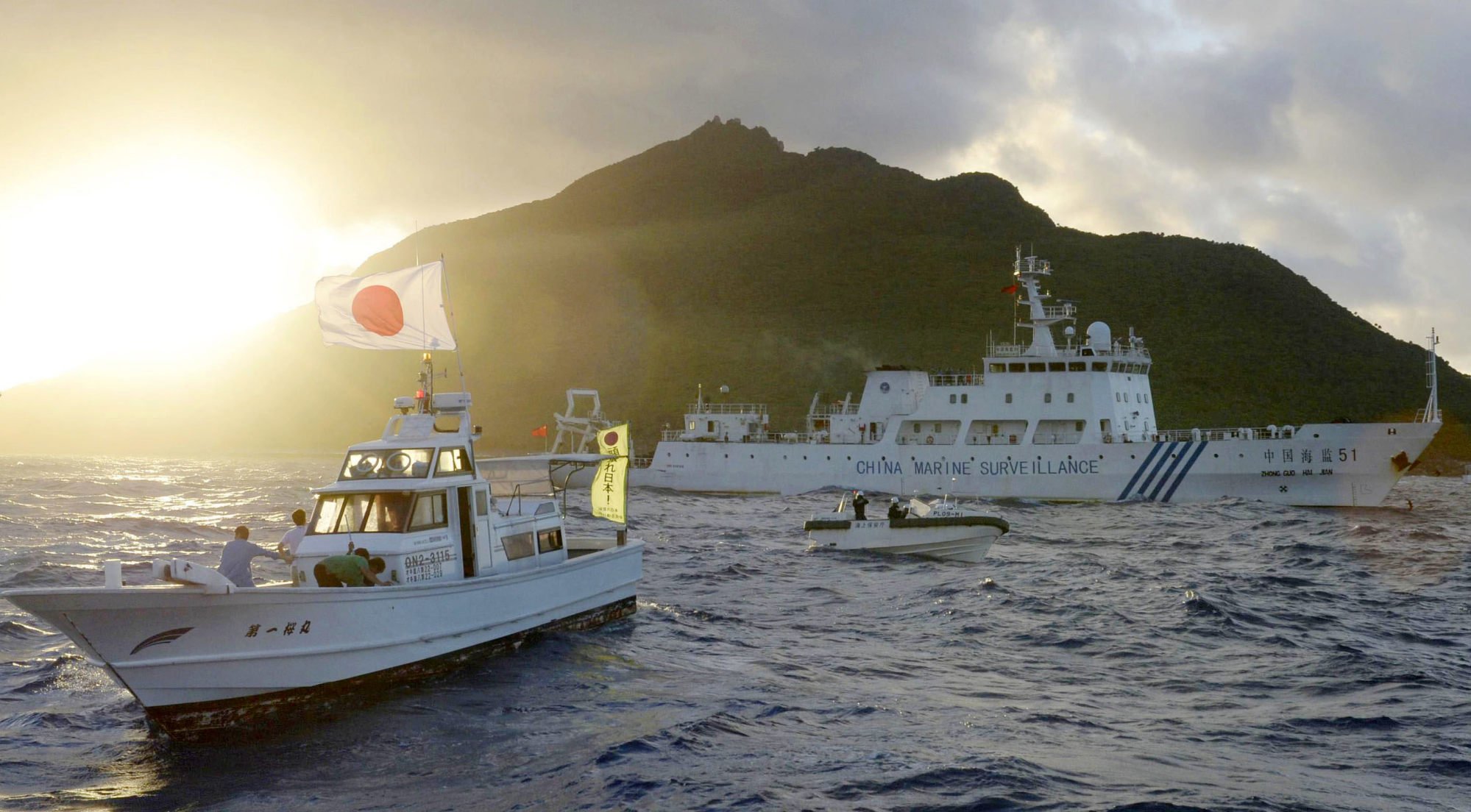
Japan will build its largest-ever coastguard vessel to enhance patrols around the disputed Diaoyu Islands, a move seen as countering China’s maritime activities without provoking a direct clash in the area.
The new vessel will be 200 metres from bow to stern and have a gross tonnage three times that of the largest ship serving in the Japanese coastguard currently, the Yomiuiri newspaper reported on Saturday, suggesting that it would weigh around 18,000 tons.
“Japan wants this new ship to be obvious and active and demonstrating control over the area,” said Garren Mulloy, a professor of international relations at Daito Bunka University and a specialist in military issues, told This Week in Asia.
“I do not see this as an escalation but a demonstration of policing and management by a non-combat organisation,” Mulloy said, referring to the Japanese coastguard ship.
Japan intends to use the new vessel as a semi-permanent floating base close to the disputed area, enabling the coastguard to monitor the activities of Chinese coastguard units that intrude into what Tokyo refers to as the Senkaku Islands and considers its territory.
Bilateral tensions continue to rise following an official protest lodged by Japan against China on Friday after four armed Chinese coastguard vessels entered the waters around the islands. Japan said it was the first time that Chinese ships with weapons had approached the Tokyo-administered islands.

The Chinese coastguard replied that the patrol was a “routine action” to safeguard Chinese sovereignty, security and maritime rights and a response to recent Japanese “negative moves”.
Japan is taking precautions against a sudden Chinese land grab of the uninhabited territory, similar to Beijing’s occupation of shoals and small islands in the disputed South China Sea, according to analysts.
China is unlikely to attack Japan over their territorial row as it would be costly for Beijing due to the commitment by the US to help Tokyo under its treaty obligations in such a scenario, the analysts say.
The greater concern was an accidental clash that could quickly escalate, said Ryo Hinata-Yamaguchi, an assistant professor of international relations at the University of Tokyo.
“I do not think that China is looking for a fight at this moment. I think China is trying to find some wiggle room on the issue. It is literally testing the waters,” Hinata-Yamaguchi said.
“What I am afraid of is a situation that escalates and which neither side can fall back from,” he said, citing bilateral tensions in 2010 after a Chinese fishing boat collided with Japanese coastguard vessels in waters around the islands.

The incident triggered a major diplomatic incident with Beijing demanding the immediate release of the boat’s captain Zhan Qixiong and his crew after their detention by the Japanese and cancelling several ministerial-level meetings in protest. Media coverage in China ramped up public sentiment against Tokyo, leading to widespread protests at Japanese diplomatic missions and vandalism of Japanese businesses.
There were also demonstrations in Hong Kong, where local fishermen burned the Japanese flag outside Tokyo’s consulate, and Taiwan, which also claims the islands as its territory.
Zhan and his crew were released after more than two weeks.
“We have seen that escalation can be difficult to control and I could see a small incident leading to China doubling down on its actions and resulting in an unintended conflict,” Hinata-Yamaguchi said.
The Japanese coastguard will include the cost of the new ship in its 2025 budget request. The ship is expected to be operational by 2029, with the Yomiuri quoting sources as saying that discussions are underway for a second vessel of the same class.
The ship can carry dozens of high-speed rubber craft and three helicopters. Apart from acting as a command vessel for other vessels around the Diaoyus, it has sufficient space to store large volumes of emergency supplies to respond to natural disasters.
Another anticipated role is the evacuation of civilians from parts of the Okinawa Islands in the event of a conflict over Taiwan spilling over into southern Japan.
Beijing views Taiwan as a renegade province that should be reintegrated into mainland control, by force if necessary. While many nations, including the US, do not officially acknowledge Taiwan as an independent state, they oppose any use of force to change the existing status quo.
“Japan does not have enough ships or personnel to go around and having one large vessel that is able to stay on station for an extended period of time will be an advantage,” said Mulloy.
“A large ship will provide much better radar monitoring of the sea and airspace around the [Diaoyu] islands and be a better platform for operating helicopters that will give it the capability of looking over the horizon.”
Some observers have called on Japan to build military facilities on the islands to reinforce Tokyo’s claims in the face of growing Chinese pressure.

Mulloy said such a plan was not feasible for two reasons. “The first is the optics, giving China the opportunity to portray Japan as militarising the islands and undercutting Japan’s position that there is no territorial issue as they are an integral part of the nation,” he said.
“The second issue would be the tricky technical and logistical problems associated with having personnel on the islands, which have no infrastructure at present and could even be something of a humiliation for Japan if there are Chinese vessels just offshore.”
Mulloy said China was not ready to mount an invasion of the islands even though it possessed the capacity to do so.
“What would they gain? International opprobrium from most countries, international sanctions and most countries would reroute their ships away from the area, which would impact Chinese trade.”
SCMP

